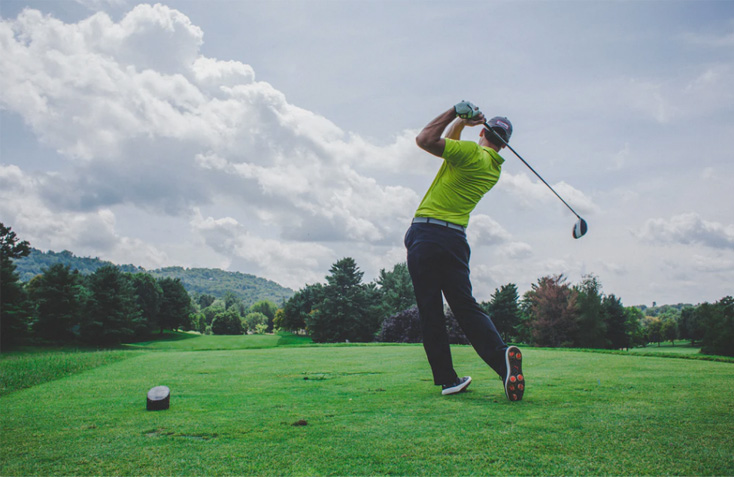
Human life appears to be boring without sports. Sports stimulate all of our cells and keep our bodies active, fit, and trim. Unfortunately, playing sports can bring forth the risk of injury. Injuries are painful in a sports world physically and mentally because they can lead to sportspeople cutting short their careers early enough. A freak knee injury forever changed Robert Edward’s career. A dynamic point guard for Orlando Magic, Penny Hardaway is also among the many whose promising career was derailed by injuries. So, it becomes imperative for people who are constantly engaged in sporting activities to know the most common form of injuries and their treatment. In this article, we will look at the most common sports-related hand and wrist injuries as well as therapeutic options to keep you moving.
Hand and wrist injuries in sports
There are an array of injuries that can occur in an athlete’s hands and wrists. These injuries can be classified into two broad categories, namely:
- Traumatic(acute).
- Overuse(chronic).
Traumatic injuries often occur to athletes who participate in high-impact sporting activities. Examples of these activities are football, skating, hockey, and wrestling. Traumatic injuries usually happen due to a blow or force, for example, when tackled in football. This results in things like fractures, cuts, concussions, sprains, and strains. The most common traumatic injuries include:
- Muscle strains.
- Joint dislocations.
- Ligament tears.
- Tendon inflammation.
- Finger fractures.
Chronic injuries are more common in sporting activities that require repetitive motions. Examples of these games include golf, tennis, baseball. This kind of injury is typically stress-induced and include:
- Tendonitis – tendon inflammation, irritation, or tears.
- Tendon dislocation.
- Stress fractures.
- Nerve injuries.
When left untreated, chronic injuries will impact an athlete’s performance. If the injury persists or other treatments have proven unsuccessful, surgery will be the choice of last resort.
Description of specific injuries with their medication
The muscle strain occurs when a tissue connecting the muscle to the bone(tendon) is stretched or torn. Hand, elbow, and wrist sprains and strains occur when the tendon is strained or stretched. The symptoms of muscle strain or sprain include:
- Pain.
- Swelling.
- Reduced range of motion.
- Stiffness.
Diagnosis of sprain and strains and treatment
Your knee doctor can diagnose a hand, elbow, or wrist strain and sprain through a physical exam. In some cases, your knee doctor will order imaging tests such as X-rays and MR. This test will help to identify what is causing the pain, swelling, or stiffness. Some of the ways to treat muscle strains and sprains are:
- Heat and ice – alternative heating and icing to improve movement.
- Pausing strenuous games till you heal up.
- OTC (over the counter) medication – buy medication as prescribed by your knee doctor.
Joint dislocation
Some individuals are born with loose ligaments and prone to joint dislocation or injury. Others develop dislocation from contact sports such as football, hockey, downhill skiing, and gymnastics. Joint dislocation can attract other complications such as nerve or blood vessel damage in or around your joint, development or arthritis in the affected as you age, and even tearing the muscle. Examples of dislocations in sports life include elbow dislocation, shoulder dislocation, and break of the radius bone.
Symptoms of dislocation and its treatment
For a dislocated wrist, the most common symptom is intense pain that is usually worse as you try moving your wrist up and down or side to side. You may also notice the following signs around your wrist.
- Swelling.
- Tenderness.
- Discoloration and bruising.
- Weakness.
It is vital to visit a knee doctor or a specialist to ensure that it does not develop other complications. Mild dislocations are usually treated with procedures called reduction. In this procedure, the knee doctor gently maneuvers the bone back to its proper position. For severe cases, you might need surgery to realign your wrist bone and repair your torn ligaments. After each treatment, you will need physical therapy to ensure that you regain strength and flexibility in your wrist.
Ligament tears
Ligaments are cords of rigid, flexible, and fibrous tissue that connect bones and help in providing support to joints. Ligaments and knee joints are the most affected by sports injuries. The most common kinds of ligament injuries include:
- Sprained ankle – it is stretch, micro-tear, or complete tear to the ligament on the outer side of the ankle.
- Knee ligament injuries – depending on the four ligaments that hold the knee together, knee ligaments injuries vary as follows.
- ACL (anterior cruciate ligament) tear is common in soccer, football, and basketball tears in most cases requiring surgery.
- MCL (medial collateral ligament) tear – result from activities that put multiple pressure on knees. For example, skiing may recover without surgery.
- PCL (posterior cruciate ligament) tear is the least common and usually occurs from a direct fall on the knee. Visiting a knee doctor will help you come back to shape and sports physique.
- Elbow ligament injuries – Ulnar Collateral Ligament (UCL) is the most common form of injury in this category. It is sometimes called the Tommy John injury. It is the most common in the field of baseball. Traumatic tears can occur in sports such as wrestling.
- Thumb ligament injuries – gamekeepers’ thumb is the most common type of injury that occurs when there is a ligament tear between the base of the thumb and the wrist bones. Handballers are most susceptible to this type of injury. Checking on a knee doctor is the most appropriate way to regain your thumb health.
Nerve injuries
Nerves are fragile, and therefore they are easily damaged. They mainly occur when the nerve is cut, stretched, or compressed.
Symptoms and treatment
- Loss of feeling or numbness.
- Tingling.
- Loss of mobility or its function.
- Pain can be severe.
Nerve injury treatment mainly depends on the seriousness of the damage. Nerve injuries can be challenging to treat, especially when the nerve is completely severed. Treatment includes rest, activity modification, medication, and physical therapy.
Conclusion
Understanding the various forms of sports injuries is paramount to any sporting individual who dreams of growing in his career or talent. Both acute and traumatic injuries should be treated early enough so that the development of other complications is avoided. If you’ve injured your hand or wrist, or any other part of your body contact the knee doctor Ft. Lauderdale experts at OSI.
